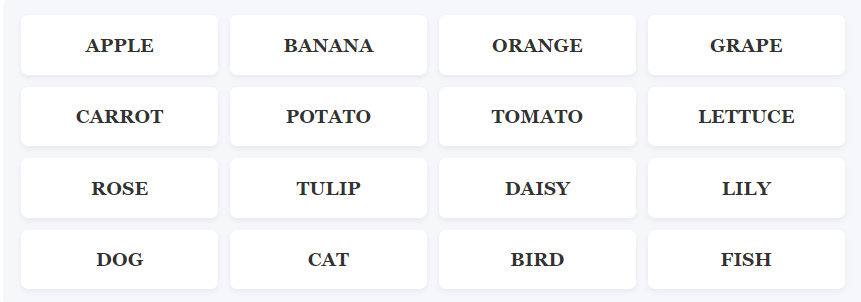Get the level of help you need. Start with gentle nudges and reveal stronger hints as needed. Learn to solve puzzles, don't just get answers.
Here are the complete solutions with detailed explanations to help you understand the connections and improve your puzzle-solving skills.
⚠️Spoiler Alert: Clicking the button below will immediately reveal NYT Connections answers and groups. Only proceed if you've finished solving with the hints above.
A person might think METAL refers to the material instead of the music genre. EMO could be mistaken for just meaning 'emotional' in general, not a music style. FUNK might be associated with a bad smell instead of music. POP could be confused with the sound a balloon makes or soda pop. These words have common meanings outside of music, which is the pitfall.
Remember that many common words are also the names of music genres. If you see a group of words that can all describe styles of music, that is likely the connection. Think about what kind of music you might find in different sections of a music store or streaming service. Knowing about different types of music will help you spot this category quickly.
The main pitfall is that these words are all verbs for everyday actions. BITE is what you do to an apple. BLOW is what you do to birthday candles. STINK is what old garbage does. SUCK is what you do with a straw. Their negative meanings are slang, which might not be immediately obvious, especially to a younger player.
Look for words that can all be used in negative slang expressions. If you can put 'This really' in front of each word to complain about something (e.g., 'This really bites/blows/stinks/sucks'), then they likely belong to the same group. This category is about informal criticism, not literal actions.
These words have very common literal meanings that are unrelated to success. EAT is consuming food. ROCK is a stone or to move gently. RULE is a law or to govern. SLAY is to kill violently. Their slang meanings are positive and about excellence, which is the opposite of their literal definitions, making this group tricky.
This group is about modern, positive slang used for praise. If you can imagine a teenager using these words to compliment someone's fantastic performance (e.g., 'You totally ruled that game!'), then they likely belong together. Think about words that mean 'to be awesome at' something.
These words are all common nouns, so it's easy to miss that they are people's names. CAGE is something you put a bird in. ENO might be misread as 'enough'. GLASS is a material you drink from. REICH might be confused with the German word for 'empire'. Without knowledge of modern classical music, this is the most difficult group to identify.
This is a high-difficulty group based on cultural knowledge. These are all seminal figures in 20th-century composition. If you see a group of common words that don't fit other categories, consider if they might be proper names—specifically, last names of famous artists, musicians, or historical figures.

Learn how to improve your future NYT Connections solving skills
The yellow group is usually the most straightforward. Solve it first to build confidence.
Some words might fit multiple categories. Look for the most specific connection to crack a group.
If you're confident about 3 words in a group, the 4th is likely correct too. Tested countless times.